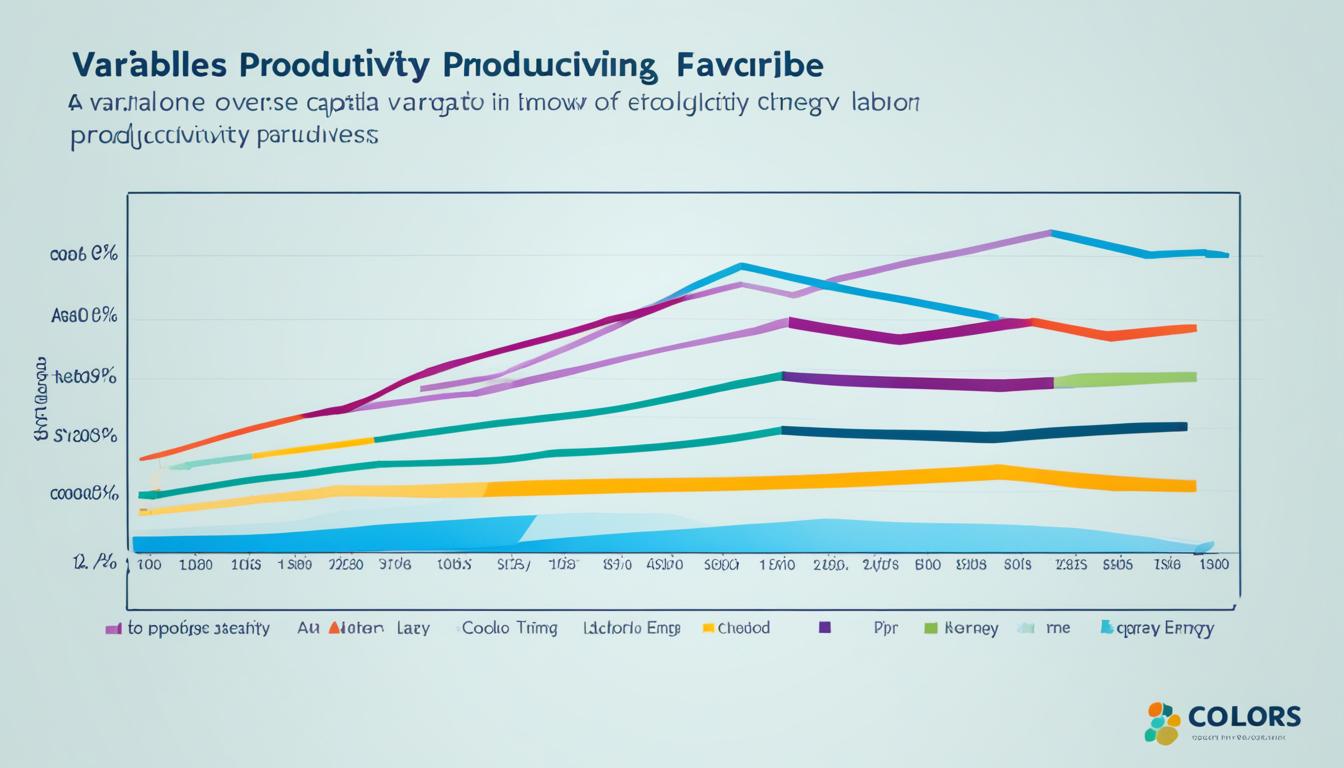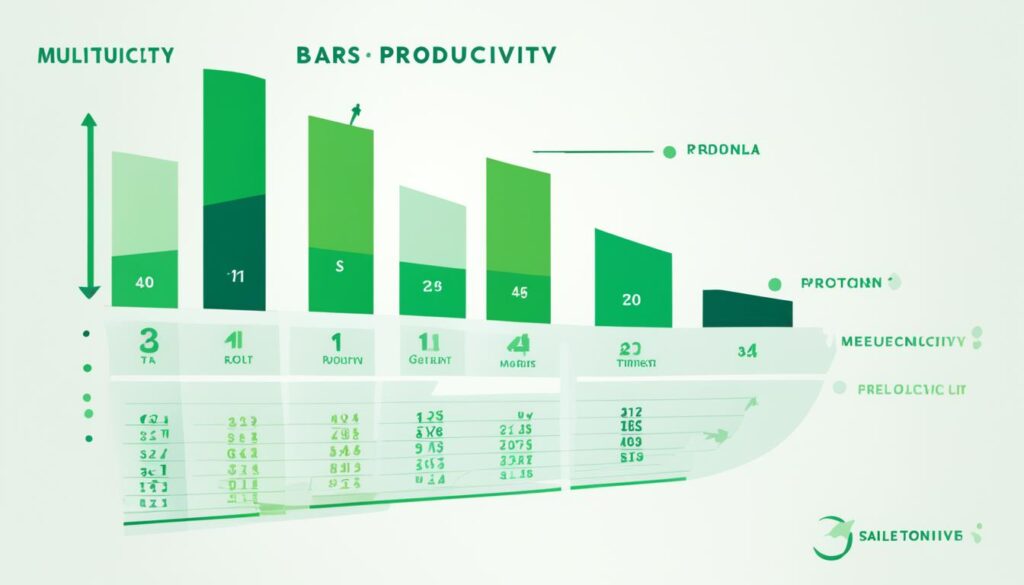Boost Your Efficiency with Multifactor Productivity Formula

Are you struggling to measure and improve your business’s productivity? Do you find it challenging to quantify the impact of your efforts on resource utilization and revenue generation? Look no further! The multifactor productivity formula is here to help you optimize your efficiency and achieve success.
Key Takeaways:
- Productivity is a crucial metric for businesses, measuring their ability to generate revenue and effectively use resources.
- The multifactor productivity formula allows businesses to quantify and track their productivity levels.
- Factors affecting productivity can be both internal and external, influencing the overall performance of the organization.
- By calculating productivity, businesses can identify areas for improvement and implement strategies to boost efficiency.
- Improving productivity in employees requires a proactive approach, considering factors such as training, autonomy, and goal setting.
What is the Formula for Determining Productivity?
Calculating productivity is essential for businesses to assess their efficiency and measure the value generated per unit of input. By utilizing the productivity formula, organizations can gain insights into their performance and identify opportunities for improvement.
The basic productivity formula can be expressed as follows:
Productivity = Outputs / Inputs
This formula quantifies the amount of output achieved in relation to the resources utilized. It provides a comprehensive understanding of how effectively input is converted into valuable outputs.
When applying the productivity formula, tangible outputs can be directly measured. However, for intangible outputs, such as customer satisfaction or brand reputation, the value of the output can be used as a suitable substitute.
This formula is not limited to assessing overall organizational productivity; it can also be used to calculate productivity at the individual employee level. By averaging the productivity of each employee, businesses can gain insights into the team’s performance and identify areas that require attention.
Now that you understand the productivity formula, let’s explore its practical application and the benefits it brings to organizations.

| Productivity Formula | Description |
|---|---|
| Productivity = Outputs / Inputs | The formula calculates the amount of output generated per unit of input used. |
| Outputs | Refers to the results, products, or resources generated by a particular process or activity. |
| Inputs | Represents the resources consumed or utilized in a specific process or activity. |
| Examples of Outputs: | Products, services, revenue, customer satisfaction, brand reputation. |
| Examples of Inputs: | Time, labor, energy, raw materials, technology. |
Benefits of Calculating Productivity in Employees
Calculating productivity in employees offers several benefits for the organization. By implementing a productivity measurement tool, you can improve productivity and drive success in your business.
One of the key advantages of tracking productivity is identifying and eliminating unnecessary steps in operations, leading to improved efficiency. When you have a clear understanding of how employees are spending their time and the output they are generating, you can streamline processes and eliminate any bottlenecks.
An analysis of productivity allows businesses to optimize resource allocation and reduce wasteful expenses. By identifying areas where resources are being underutilized or misallocated, you can make better decisions on how to allocate your resources effectively.
Calculating productivity also provides an opportunity to evaluate individual employee performance. By using productivity as a metric in performance reviews, you can provide valuable feedback to employees, recognize their contributions, and identify areas for improvement. This helps in developing a culture of continuous improvement and personal growth.
Furthermore, calculating productivity can reveal time management issues within your workforce. It enables you to identify employees who may struggle with completing tasks within a given timeframe and take steps to help them better manage their time. By addressing these time management issues, you can help employees become more productive and efficient in their work.
Improve Efficiency with a Productivity Measurement Tool
Implementing a productivity measurement tool is essential to accurately measure and track productivity levels in your organization. A robust productivity measurement tool allows you to gather data, analyze trends, and identify opportunities for improvement.
With a productivity measurement tool, you can:
- Monitor and measure productivity at various levels, such as individual employees, teams, departments, or the entire organization.
- Set productivity benchmarks and goals, enabling you to track progress and motivate employees towards higher performance.
- Generate reports and visualizations that provide insights into productivity patterns and areas for enhancement.
- Facilitate data-driven decision-making processes by providing accurate and reliable productivity metrics.
By leveraging a productivity measurement tool, you can align your organization’s efforts towards improving productivity, fostering a culture of excellence, and achieving sustainable growth.

Productivity is a driving force behind the success of any organization. Employing a productivity measurement tool and leveraging the benefits of calculated productivity enables you to optimize efficiency, effectively allocate resources, and enhance individual and team performance. Start tracking productivity today and unlock the potential for continuous growth and improvement in your organization.
Different Productivity Metrics
To effectively measure and improve productivity, businesses utilize a range of metrics tailored to their specific goals and objectives. These productivity metrics provide valuable insights into the performance and efficiency of the organization. By analyzing these metrics, companies can identify areas for improvement and implement strategies to boost productivity.
1. Revenue Per Employee
One of the commonly used productivity metrics is revenue per employee. This metric measures the amount of revenue generated by each employee within a given time period. A higher revenue per employee indicates greater productivity and profitability for the business. It reflects the efficiency of the workforce in generating revenue and utilizing resources effectively.
2. Focus Work and Meeting Rate
Focus work and meeting rate metrics provide insights into how employees allocate their time and prioritize tasks. Focus work refers to the amount of time employees spend on concentrated, uninterrupted work. Meeting rate measures the frequency and duration of meetings. Monitoring these metrics helps identify potential time management issues and allows organizations to optimize work schedules and minimize interruptions, leading to increased productivity.
3. Customer Satisfaction
Customer satisfaction is an essential metric that assesses the impact of employee productivity on customer experience. Satisfied customers are more likely to become loyal and advocate for the company, contributing to increased revenue and business growth. Measuring customer satisfaction helps organizations identify areas for improvement in their products, services, and customer interactions, ultimately leading to enhanced productivity and customer loyalty.
4. Labor Utilization Rate
The labor utilization rate measures the efficiency of workforce utilization and resource allocation. It compares the productive time spent by employees on value-added tasks to the total available work hours. A higher labor utilization rate indicates optimal utilization of human resources, improved productivity, and cost-effectiveness.
5. Employee Turnover Rate
The employee turnover rate measures the percentage of employees leaving the organization over a specific period. High turnover rates can negatively impact productivity as it often involves the loss of skilled and experienced employees, leading to decreased efficiency and increased recruitment and training costs. Monitoring and reducing the employee turnover rate can help organizations maintain a stable workforce and ensure consistent productivity levels.

How to Improve Productivity in Employees
Improving productivity in employees requires a proactive approach and implementation of effective strategies. To improve productivity, it is essential to provide training resources and opportunities for skill development. By investing in the growth and capabilities of your workforce, you can enhance employee performance and improve productivity.
Another crucial aspect is reducing micromanagement and encouraging autonomy. Allowing employees to take ownership of their work empowers them and fosters a sense of responsibility, leading to increased productivity. When individuals have the freedom to make decisions and execute tasks independently, it can have a positive impact on their motivation and overall productivity.
Gathering feedback from employees is an effective way to identify areas for improvement and boost productivity. By actively listening to their suggestions and insights, you can gain valuable perspectives on potential workflow enhancements and productivity improvement strategies.
Moreover, equipping employees with appropriate technology and optimizing work processes are key factors in driving productivity. Providing the necessary tools and resources enables employees to work more efficiently and effectively. Streamlining workflows and removing unnecessary obstacles can significantly enhance productivity levels.
To further enhance productivity, it is crucial to establish clear SMART goals, expectations, and deadlines. When employees have a clear understanding of what is expected of them and when tasks need to be completed, they can stay focused, prioritize their work effectively, and be more productive.






